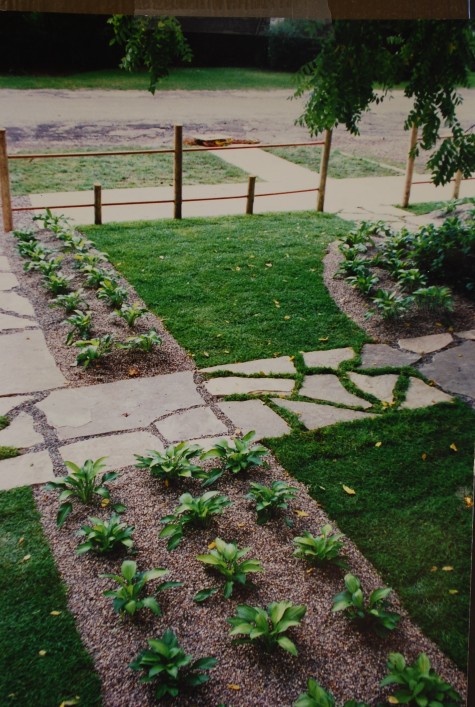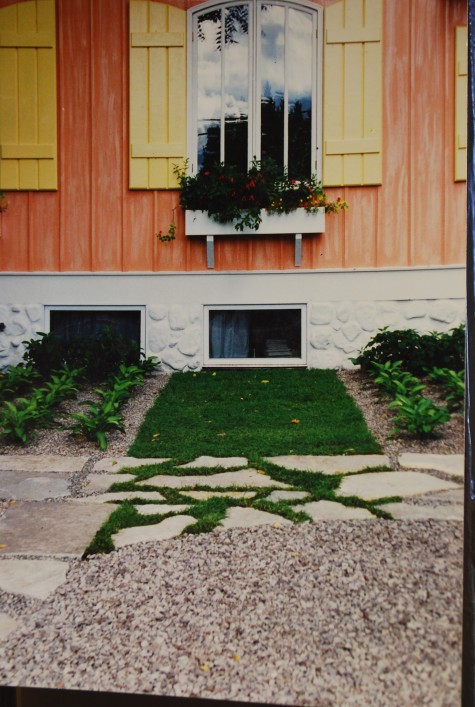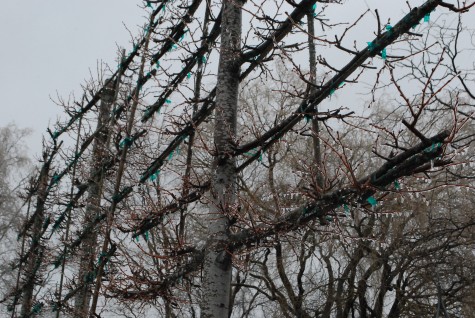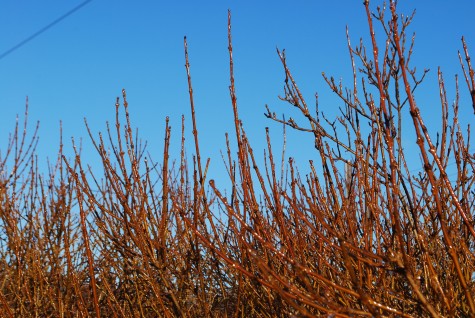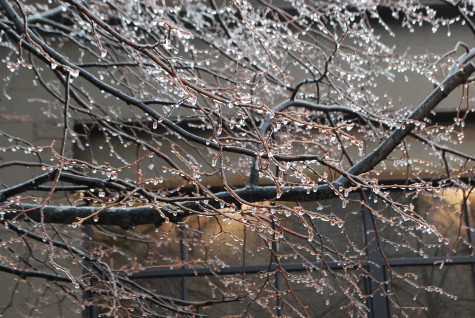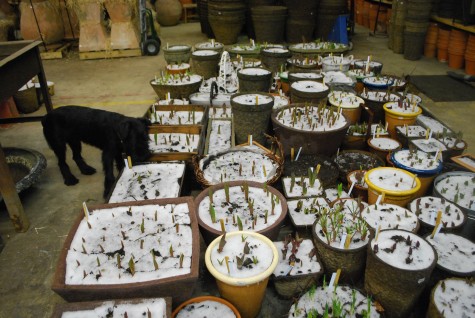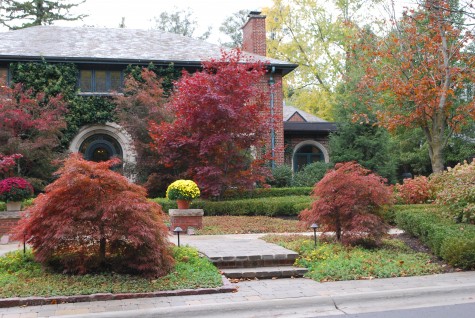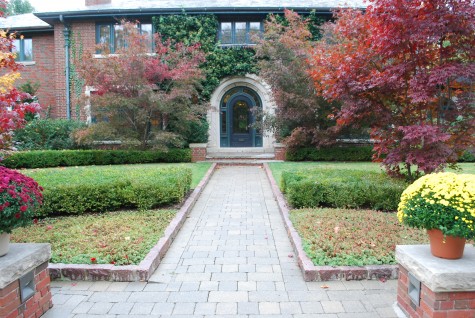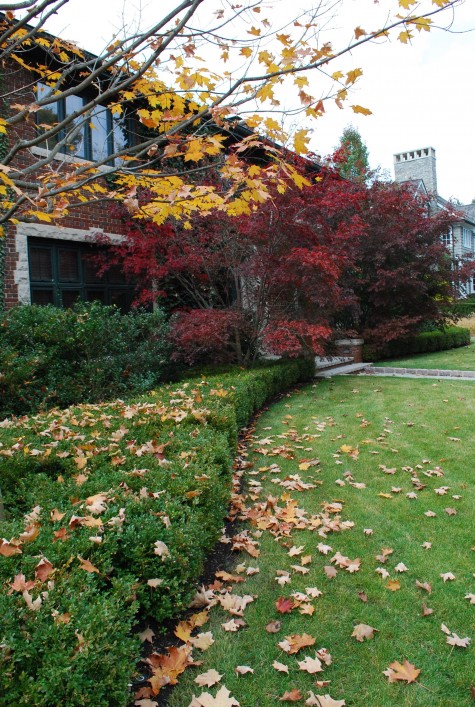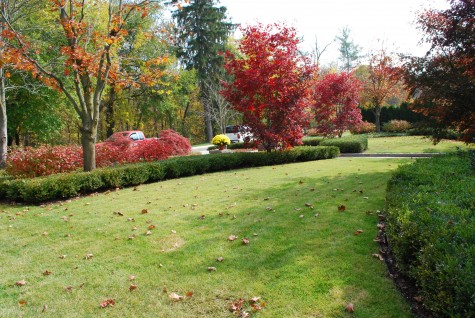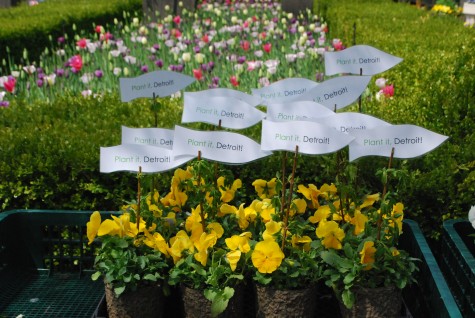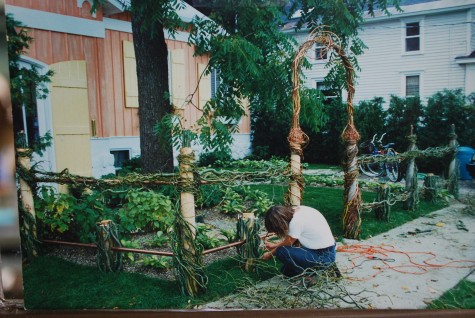
What am I up to here? Many years ago I installed a fence which was more sculpture than fence for a young client who owned a second home in Harbor Springs. Second homes, vacation cottages-they have landscape requirements all their own. People go to the cottage to have fun, and relax-not work. The landscape needs to survive and thrive with intermittent care. I would hate driving up to a landscape that looks neglected. Lake and woods properties can be easy-whatever nature has seen fit to put there is generally quite beautiful. But this second home was in a neighborhood in a northern community right on Lake Michigan. Lacking a woodland, or sand, beach grass and water, some kind of landscape was in order.
The house was small, and the property very small. A gravelled car park, and a stone walk across the yard to the front door were the first order of business. The gravel, grass, and rows Sum and Substance hosta would cover the ground plane with stripes. My young client happened to be an artist; she was interested in a design with a strongly graphic and whimsical quality. A few Annabelle hydrangea would provide some height and interest during the summer months.
The large shuttered windows seemed to ask for window boxes. Both the width and the location of the windows and boxes would dictate the placement and the width of the lawn stripes. As the boxes were fairly high off the ground, easy access to them with a stepladder would make caring for them all that much easier. The grass stripes would lead your eye right to the boxes. It is a fairly simple matter to automatically irrigate a window box, if you already have in ground irrigation. This is not foolproof, but it can buy you some time.

The dry laid flagstone walk which traversed the yard perpendicular to the stripes was set with large joints. Where the walk crossed over a grass stripe, we put grass between the stones. Where it crossed a gravel mulched stripe of hostas, we put gravel between the stones. The size of the joints between stones depends on what kind of traffic you expect to have. Guests in sneakers would do just fine with such a walk-guests in high heels would need to pay careful attention.
 The property featured a giant walnut; I knew the hostas would tolerate that. But something seemed missing. Some element that would strongly reflect the point of view of the owner-something fun. And most of all, something that would not require regular maintenance. So I designed and built a fence- not to screen, nor to keep anything in or out. A sculpture of a fence, if you will.
The property featured a giant walnut; I knew the hostas would tolerate that. But something seemed missing. Some element that would strongly reflect the point of view of the owner-something fun. And most of all, something that would not require regular maintenance. So I designed and built a fence- not to screen, nor to keep anything in or out. A sculpture of a fence, if you will.
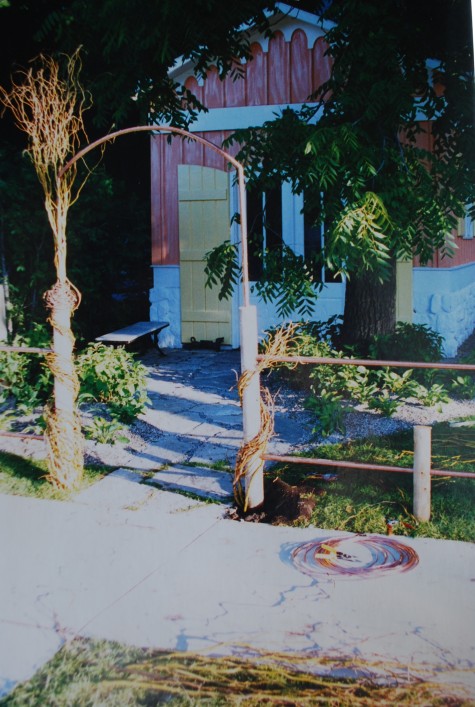 We built the fence with three materials. Peeled cedar fence poles, available locally, would form the uprights. Tall posts alternating with short ones would provide interest on several levels. We drilled through the cedar poles, and used copper plumbing pipe for the horizontals elements, and an arbor that would go over the walk. Fresh cut curly willow would informally spiral around the posts. The willow would be held in place with 1/4 inch copper tubing. The fence post finials-a nest/hairdo of copper wire.
We built the fence with three materials. Peeled cedar fence poles, available locally, would form the uprights. Tall posts alternating with short ones would provide interest on several levels. We drilled through the cedar poles, and used copper plumbing pipe for the horizontals elements, and an arbor that would go over the walk. Fresh cut curly willow would informally spiral around the posts. The willow would be held in place with 1/4 inch copper tubing. The fence post finials-a nest/hairdo of copper wire.
 Rob handled the contruction of the arch. 10 foot long willow pieces were inserted in the ground next to the cedar post, and wound up and aroung that post. Smaller willow braches were added to the top of the post, and secured with copper tubing. The flexible tubing repeated the shape of the wire finials, and went on to wrap and secure the willow to the rigid pipe. As I gave all of the pictures of the finished fence to my client, the shape of the top of the arbor is from memory-I think Rob made an informal fleur de lis to finish.
Rob handled the contruction of the arch. 10 foot long willow pieces were inserted in the ground next to the cedar post, and wound up and aroung that post. Smaller willow braches were added to the top of the post, and secured with copper tubing. The flexible tubing repeated the shape of the wire finials, and went on to wrap and secure the willow to the rigid pipe. As I gave all of the pictures of the finished fence to my client, the shape of the top of the arbor is from memory-I think Rob made an informal fleur de lis to finish.
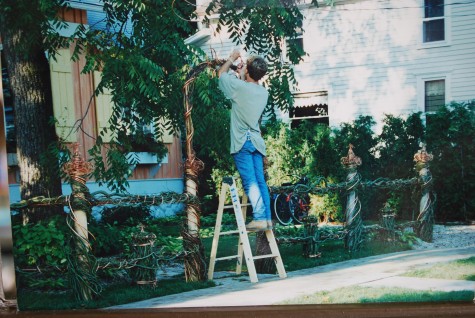 All of the rigid pipe was covered in curly willow, and secured with copper tubing. This was not a particularly orderly or repetitive process-we did what we thought looked interesting. The relationship of the metal to the willow proved to be great visual fun.
All of the rigid pipe was covered in curly willow, and secured with copper tubing. This was not a particularly orderly or repetitive process-we did what we thought looked interesting. The relationship of the metal to the willow proved to be great visual fun.
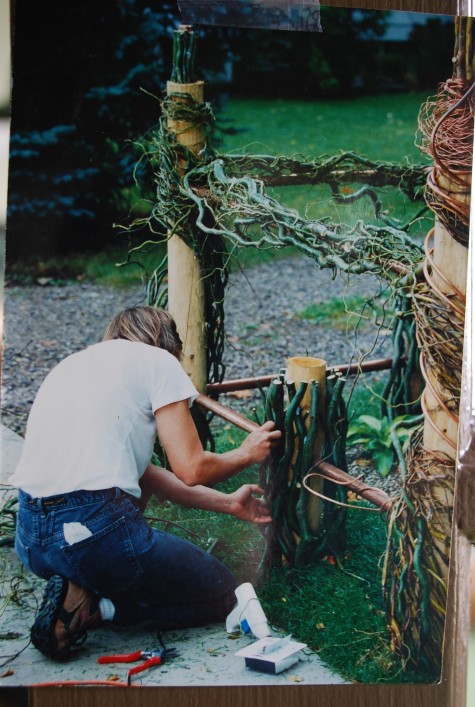 I did hot melt glue the short willow pieces on the low posts, more as a method to hold them in place while the water pipe was wound round, rather than a securing mechanism. I remember coming by long after finishing the fence-some of the willow stuck in the ground had rooted. What unexpected fun. There would be other construction projects featuring willow, but this one was especially satisfying.
I did hot melt glue the short willow pieces on the low posts, more as a method to hold them in place while the water pipe was wound round, rather than a securing mechanism. I remember coming by long after finishing the fence-some of the willow stuck in the ground had rooted. What unexpected fun. There would be other construction projects featuring willow, but this one was especially satisfying.
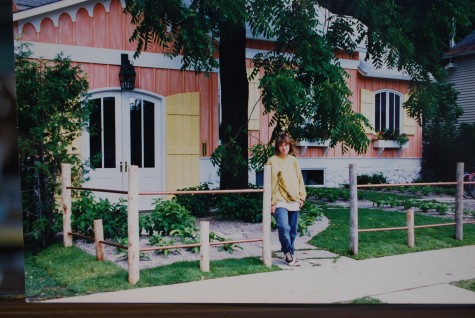 Once the fence bones were built, I was ready to go. Is the fence still there? It would be about 17 years old now. I have no plans to go back and look.
Once the fence bones were built, I was ready to go. Is the fence still there? It would be about 17 years old now. I have no plans to go back and look.
